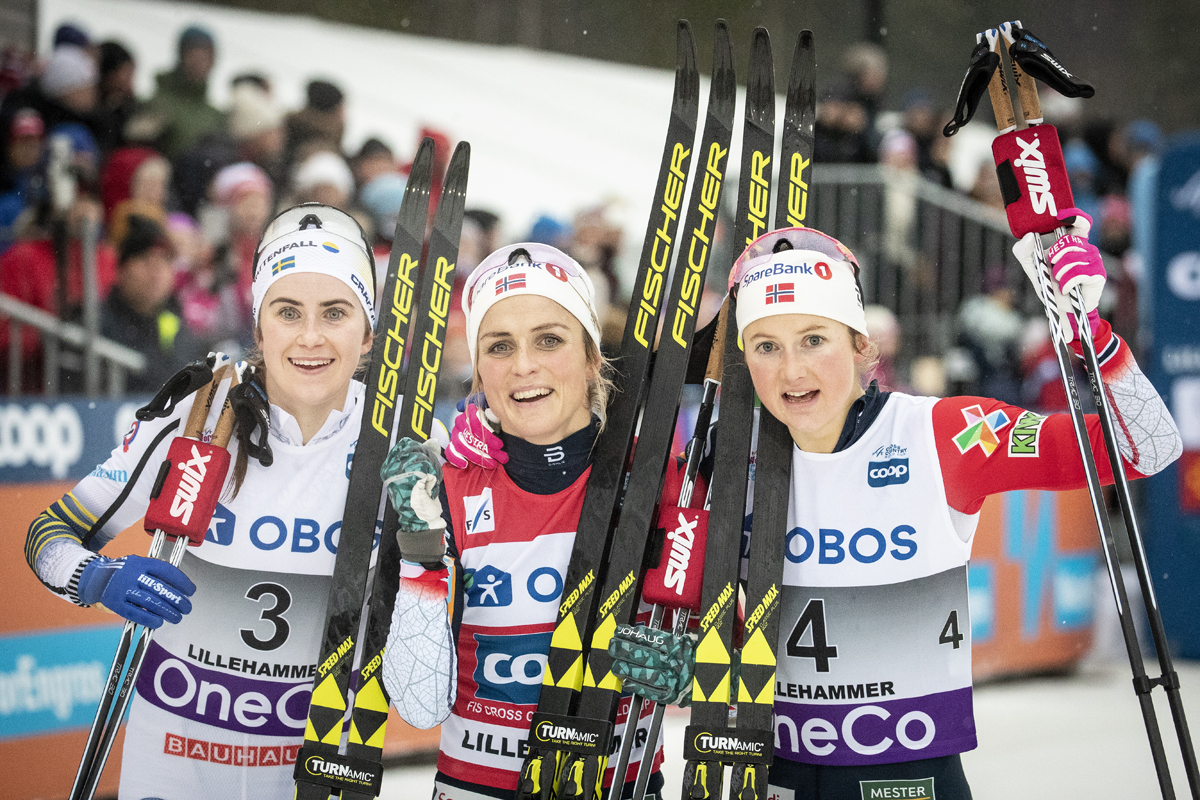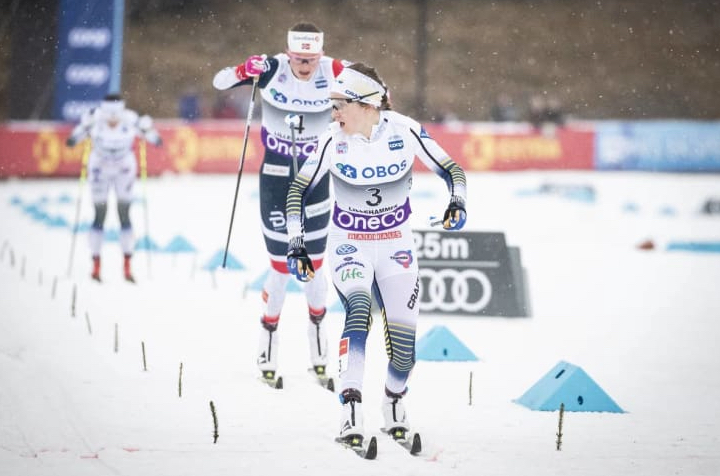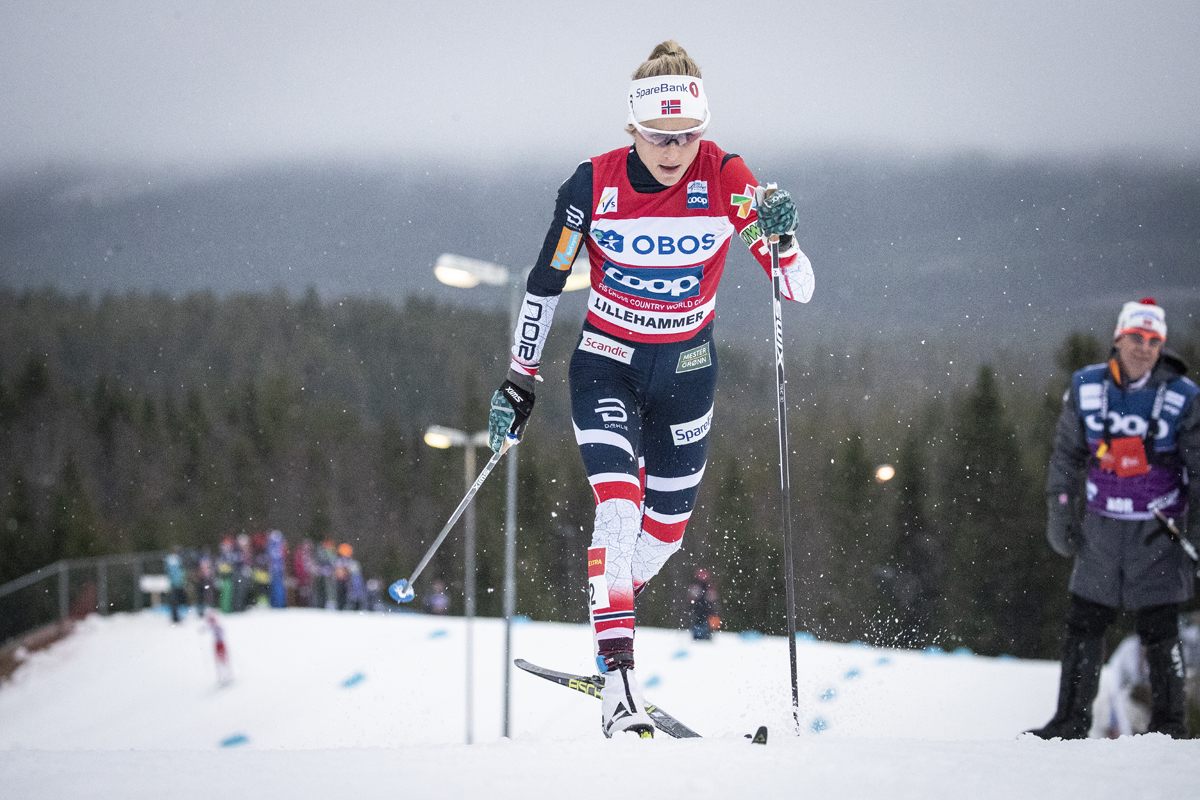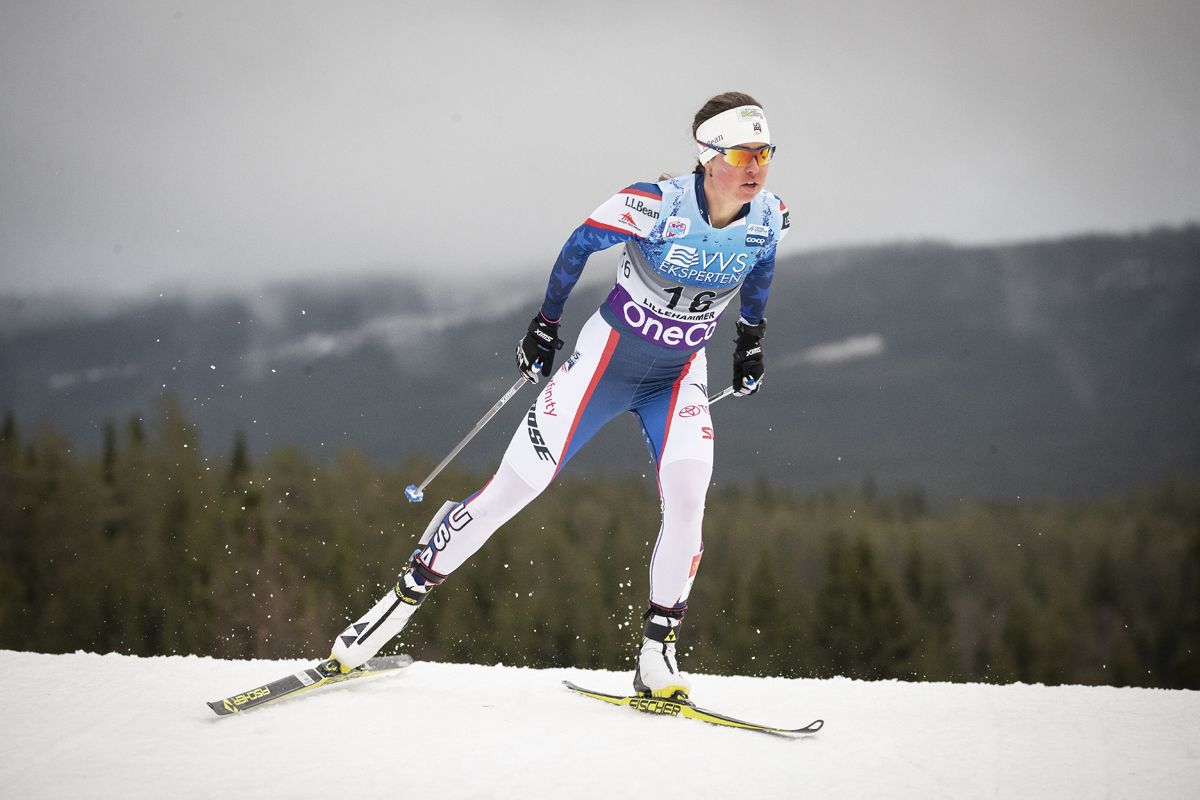
Here’s a sentence we might see routinely this season as the World Cup distance races transpire. Norway’s Therese Johaug wins again!
In Sunday’s 10-kilometer classic pursuit race in Lillehammer, Norway, Johaug set an unmatched pace to win her second race of the weekend and the overall in Lillehammer’s three-race series.
Sweden’s Charlotte Kalla lead off the race, starting a spartan two and a half seconds ahead of Johaug. Kalla led the first lap, with Johaug tight on her heels.
On the first major climb, which kicks about 3 k into the 5 k loop, it appeared Johaug was struggling with her kick wax. With slight micro-adjustments when firing the muscles, if there was any kick-wax deficit, it did not slow her down. Kalla and Johaug skied through the first lap mark together. Soon thereafter, Johaug tightened her grip on the win by stretching the time back to a just-hanging-on Kalla. By 7.2 k, Kalla had bled 15.7 seconds to Johaug.
Johaug continued her unrelenting pace throughout the second lap. Kalla continued to lose time whereas Kalla’s teammate, Ebba Andersson, who began the race 14 seconds back, began to make ground on Kalla.

Andersson was able to close the gap between Kalla and herself between the 7.3 k and 8.3 k mark. By 8.3 k, Andersson had put a 6.4 seconds buffer between herself and Kalla. Behind Kalla, Norway’s Ingvild Flugstad Østberg kept the third podium step within her sights. On the last climb before the finish, Østberg caught and passed Kalla and began gaining time on Andersson.
Johaug won in a time of 29:25.5 minutes. Andersson and Østberg finished neck-and-neck, with the Swede taking second (+16.8), and Østberg third, only 1.1 seconds back. Kalla finished fourth (+23.1).

After this weekend of racing, Johaug sits first overall in World Cup standings with 400 points. Andersson is in second, 91 points back, Kalla is positioned third, with 298 points.
Sadie Bjornsen of the U.S. Ski Team, after a strong start to the season, is eighth overall on the World Cup. On Sunday, Bjornsen was one of three U.S. women in the top-15. Bjornsen started Sunday’s pursuit in 7th and finished in 10th with a time of 31:57.2 minutes.
Staring 50 seconds back, Bjornsen lost time on course to the leaders. She ultimately finished 2:21.7 minutes behind the winner, Johaug.
“It was definitely a tough race out there, I had pretty slick skis, so it was just a matter of trying to stay positive and herringbone as much as I could and it was definitely a difficult course to be struggling on,” Bjornsen told FasterSkier in the Lillehammer mixed zone.
Bjornsen had intended to link up with the skiers beginning ahead of her. But the tough conditions foiled her strategy.

“My plan was to try to catch Krista Pärmäkoski and Ragnhild Haga in front of me and try to ski with them and I kind of yo-yo’d with Haga the entire time, so that was definitely really hard,” Bjornsen said. “I was kind of in No Man’s Land, not skiing with anyone, and when Stina Nilsson went by I was not able to stay with her pace. It was going uphill and I was having to herringbone, so it was kind of sad to not catch on to that chain. But I tried to just keep fighting the whole way.”
U.S. Ski Team World Cup Coach Matt Whitcomb confirmed Bjornsen was thin on kick. “I mentioned I thought our team did better than most today with regards to wax and skis. Whitcomb said. “I do think Sadie was a little bit lean on kick, and think she was on form. She was ready to climb up today and I just don’t think we gave her what she needed to to make it happen.”
Rosie Brennan (APU) and Jessie Diggins (USST) began Sunday’s race in 13th and 14th respectively, 1:25 minutes behind Kalla. The U.S. pair was able to ski together for the majority of the race in a pack with Norway’s Heidi Weng, and Russia’s Yulia Belorukova.
By the finish, Diggins was able to gain one place to end up 13th (+2:42.4). Brennan lost three places in the finishing stretch to take 15th (+2:46.0).
“I struggled to compose myself on that last climb, and don’t have much of a sprint finish, so lost a place or two there,” Brennan told FasterSkier after the race,
“It was a good race, not a great race, but yeah I’m happy that I had a good group to skate with and I was able to hang in there”, Brennan told FasterSkier. “[I was] able to ski comfortably in a group and feel comfortable with some pretty strong girls and it was super nice to be able to ski with Jessie [Diggins] for a lot of it. “When it’s someone you train with more often it’s a little bit more comfortable, and her strength is on the downhill and that’s my weakness, so it’s nice to be able to follow someone.”
Whitcomb noted Brennan’s marked improvement and return to form after her struggles with an illness last season.
“It’s really fun to watch from the side of the trail, an athlete that has had to deal with, and sort of had to harness so much patience,” Whitcomb reflected. “She spent so much of last season, the better half of the second part ill, and so she’s really had to settle down, recover and then get herself back in shape. These things happen over the course of months, and she had that patience, and she put in the work after she recovered and now she’s being rewarded for it, and it’s really fun to sit back and just watch an athlete be so stoked with how they’re feeling out there.”

Caitlin Patterson (Craftsbury Green Racing Project) started in 31st, 2:37 minutes behind Kalla and finished 35th, five and a half minutes behind Johaug. Throughout the race, she hovered between 27th and 32nd place, but she crashed on a downhill during her second lap and lost places.
“I was crushing it on the downhills until then and I consider myself pretty good at cornering, but I just momentarily caught a glimpse of a two girl in front of me, got too excited, lost focus, and stepped in some slush that I wasn’t expecting or something,” Patterson told FasterSkier after the race.
Racing continues on the World Cup next weekend with events in Beitostolen, Norway.
Jason Albert
Jason lives in Bend, Ore., and can often be seen chasing his two boys around town. He’s a self-proclaimed audio geek. That all started back in the early 1990s when he convinced a naive public radio editor he should report a story from Alaska’s, Ruth Gorge. Now, Jason’s common companion is his field-recording gear.


